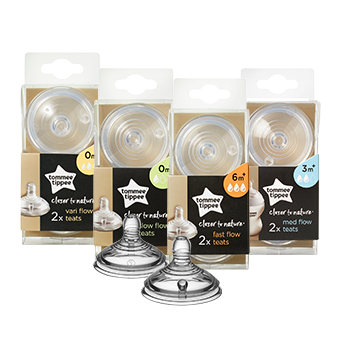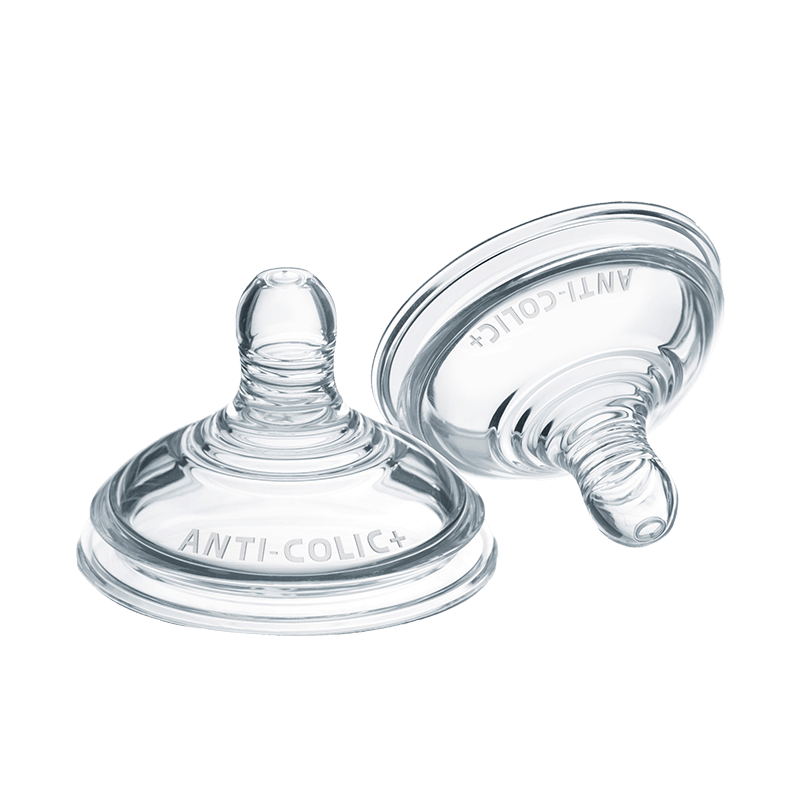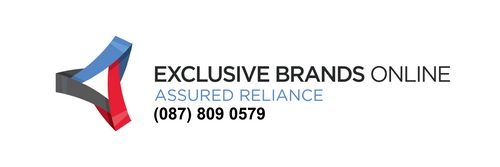
Closer to Nature Bottle Nipples
Getting Started
Great to see that you’ve purchased our Closer to Nature bottles. To help you get started and to keep your product working effectively, we’ve added all the guidance you should need within this area, as well as some handy hints and tips and troubleshooting advice.
Parts Guide
A step by step guide to how the nipples attach to your Closer to Nature bottles.

Quick Start
Before you use your bottles for the first time, please:
- Disassemble all parts and place in boiling water for 5 minutes, this is to ensure good hygiene
- Wash all parts in warm soapy water
- Rinse using clean water and sterilize
- Assemble your bottle as per the diagram
- When assembling your bottle, it’s important that you check the valve (C), holding it to the light to check that the slit in the silicone hasn’t sealed closed. If it has, pinch it gently between your fingers to re-open. If the valve has sealed closed, your bottle won’t vent properly.
- After use, wash all parts in warm soapy water, rinse in clean water, ready to sterilize once more


How to use Tommee Tippee Baby Bottles
*Inspect before each use and pull the feeding nipple in all directions
** For safety and hygiene reasons it’s recommended that the feeding nipple is replaced every 2-months or sooner if damage or weakness is noticed
Where should the valve be when I'm feeding my baby?
The valve will work wherever it’s positioned but the best place for the valve is at the top, near your baby's nose.
Closer to Nature nipples look the same, can I use them on Advanced Anti-Colic bottles?
No, you can’t use Closer to Nature nipples on Advanced Anti-Colic bottles. Closer to Nature nipples have a built-in air valve, and don’t work with our Advanced Anti Colic bottles. The valve in your Advanced Anti Colic bottles is situated inside the bottle, attached to the end of the venting tube and is shaped like a star. It’s important that you make sure you match the right nipple to the right bottle.
How long do nipples last?
Nipples take quite a lot of hammering from little gums and teeth, so they need to be changed regularly. We recommend replacing nipples every 2-months or at the first sign of any damage or weakness.
Can I buy bottles with faster flowing nipples?
All of our bottles except the 340ml version currently come with slow flow nipples as standard, as they’re best for newborns and most parents generally stock up on bottles before baby arrives. Our 340ml bottle comes with a medium flow nipple.
As your baby grows and can feed more quickly, you can buy faster flowing replacement nipples.
We have medium flow nipples, which most babies are ready for at around 3 months, and a fast flow nipple which is best from around 6 months. The ages are only guides though - you know your baby better than anyone and will be able to tell when they’re ready for a faster flow.

Cleaning & Maintenance

DOS
- Before first use, disassemble all parts and place in boiling water for 5 minutes, this is to ensure good hygiene
- Clean before first and each use
- Always wash the product immediately after each use
- Clean in warm soapy water or in dishwasher (top shelf only)
- Ensure that you take apart the venting wheel (D) and venting tube (E) and clean thoroughly with the brush provided
- For cleaning other bottle parts, use a TT bottle and nipple brush
- Sterilize all parts of the bottles after cleaning and before use (all bottle parts are suitable for sterilization by steam (electric or microwave), boiling or cold-water tablet/liquid solution.
- Inspect before each use and pull the nipple in all directions
- Throw away at first sign of damage or weakness
- For safety and hygiene reasons it’s recommended that the feeding nipple is replaced every 2-months
DON'TS
- Do not clean with solvents or harsh chemicals
- Do not allow product to come into contact with oil-based foods e.g. tomato based sauces or carrots
- Do not turn the team inside out for cleaning as damage could result
- Store or leave in direct sunlight or near a source of heat, or leave in disinfectant (“sterilising solution”) for longer than recommended as this may weaken the nipple
- Do not store with or allow to come into contact with solvents or harsh chemicals
- Not suitable for use in a conventional oven or a combination microwave with the grill feature switched on
- Do not heat in a microwave with the bottle sealed. Remove the nipple, screw ring and bottle hand first

WARNINGS
FOR YOUR CHILDS SAFETY & HEALTH WARNING!
- ALWAYS use this product with adult supervision. Accidents have occured when babies have been left alone with drinking equipment due to the baby falling or if the product has been dissassembled.
- Always check food temperatures before feeding. Heating in a microwave oven may produce localised high temperatures. Take extra care when microwave heating.
- Always stir heated food to ensure even heat distribution and test the temperature before serving.
- When making up a feed, follow the formula milk manafacturer's instructions and allow the freshly boiled water to cool before pouring it into the bottle.
- NEVER use a feeding nipple as a soother.
- Continouse and prolonged sucking of fluids will cause tooth decay. Tooth decay in young children can occur even when non-sweetened fluids are used. This can occur if the baby is allowed to use the bottle for long periods through the day and particularly through the night, when saliva flow is reduced or if it is used a soother.
Is it ok to put bottles in the dishwasher?
Of course! Pop them on the top shelf though. As with all white and clear plastic things they can get a bit stained and yucky-looking in the dishwasher (blame that Bolognese sauce or carrot soup you had last night). If they do get discoloured there’s nothing to worry about - they’re perfectly safe, they just don’t look as nice.
Troubleshooting
The nipple is collapsing during a feed – Why?
If the bottle nipple collapses during feeding, it takes longer than 20 minutes for baby to finish a bottle, or if baby tugs at the nipple or baby falls asleep mid-bottle, these are potential signs you may need to increase the nipple flow rate.
My nipples looks stained - What's happened / Are they safe?
As with other things around the kitchen, they can get a bit stained and yucky-looking in the dishwasher or even when you hand wash them (blame that Bolognese sauce or carrot soup you had last night).
Cloudy looking nipples generally occur as a result of strong cold-water sterilization. Cold water sterilization is perfectly fine, but if you’ve gone a bit over the top with the sterilization solution (it’s easily done!), it can impact the colour.
Don’t worry though, as the nipples are still perfectly safe to use, they just look a little different to the norm.
My nipples don't seem to last very long?
Nipples take quite a lot of hammering from little gums and teeth, so they need to be changed regularly. We recommend replacing nipples every 2-months or at the first sign of any damage or weakness.

Advanced Anti-Colic Nipples
Getting Started
Great to see that you’ve purchased our Advanced Anti-Colic Bottle Nipples. To help you get started and to keep your product working effectively, we’ve added all the guidance you should need within this area, as well as some handy hints and tips and troubleshooting advice.
Making up a bottle of formula for your baby using the Advanced Anti-Colic bottle
The Advanced Anti-Colic bottle is different from other bottles because of its unique anti-colic features. That means you have to make up a bottle in a slightly different way than you may be used to. Don't worry, it will soon become routine.
Using boiling water to prepare formula with Advanced Anti-Colic bottles
- Clean all parts of the bottle and anti-colic venting system thoroughly. Please follow the special cleaning instructions.
- Boil water in a kettle or pan and allow to cool for 30 minutes.
- Add the cooled, boiled water to the anti-colic bottle base and add the appropriate amount of forumla.
- Avoid shaking the bottle to mix the formula, as this can add air into the milk which can increase colic symptoms. We suggest that you stir the formula gently with a spoon to mix the feed.
We recommend reassembling the anti-colic venting system before sterilizing, so it should already be assembled. If not, please refer to the diagram to connect the star valve, venting tube and venting wheel together. Check that the slit in the star valve is open by holding it up to the light. If it has sealed shut, pinch it gently between your fingers to re-open.
Make sure that the venting tube is at room temperature before testing the temperature of the feed. Dip the tube for 10 seconds. If the heat sensing strip shows solid pink, then the feed may be too hot. Allow the feed to cool further before feeding your baby.
Once your feed is at the right temperature, finish assembling the bottle by putting the connected star valve, venting tube and venting wheel inside, then placing the hood on top of the anti-colic teat with screw ring and attaching to the bottle base. DO NOT shake the bottle.
Always check the temperature of the formula mix before feeding your baby.
Closer to Nature nipples look the same, can I use them on Advanced Anti-Colic bottles?
No, you can’t use Closer to Nature nipples on Advanced Anti-Colic bottles. Closer to Nature nipples have a built-in air valve, and don’t work with our Advanced Anti Colic bottles. The valve in your Advanced Anti Colic bottles is situated inside the bottle, attached to the end of the venting tube and is shaped like a star. It’s important that you make sure you match the right nipple to the right bottle.
Can I store breast milk in bottles?
Yes, our bottles love to look after your breast milk. We even have special lids that you can pop on to store your milk in the fridge or freezer. If you’re pumping and storing breast milk, our Pump and Go™ range may be handy too - it features a clever pouch that you use to pump, store, warm and feed (it’s our all in one show). This means there’s no need to transfer milk at any stage, so you’ll never lose a precious drop.
Cleaning & Maintenance
Can I put bottles and nipples in the dishwasher?
Yes you can. Pop them on the top shelf though. As with all white and clear plastic things they can get a bit stained and yucky-looking in the dishwasher (blame that bolognese sauce or carrot soup you had last night). If they do get discolored there's nothing to worry about - they're perfectly safe, they just don't look as inviting,
DOS
Before first use, disassemble all parts and place in boiling water for 5 minutes, this is to ensure good hygiene
Clean before first and each use
Always wash the product immediately after each use
Clean in warm soapy water or in dishwasher (top shelf only)
Ensure that you take apart the venting wheel (D) and venting tube (E) and clean thoroughly with the brush provided
For cleaning other bottle parts, use a Tommee Tippee bottle and nipple brush
Sterilize all parts of the bottles after cleaning and before use (all bottle parts are suitable for sterilization by steam (electric or microwave), boiling or cold-water tablet/liquid solution.
Inspect before each use and pull the teat in all directions
Throw away at first sign of damage or weakness
For safety and hygiene reasons we recommend replacing the feeding teat every 2-months
DON'TS
Do not clean with solvents or harsh chemicals
Do not allow product to come into contact with oil-based foods e.g. tomato based sauces or carrots
Do not turn the teat inside out for cleaning as this could damage it
Do not store or leave in direct sunlight or near a source of heat, or leave in disinfectant (“sterilizing solution”) for longer than recommended as this may weaken the teat
Do not store with or allow to come into contact with solvents or harsh chemicals
Not suitable for use in a conventional oven or a combination microwave with the grill feature switched on
Do not heat in a microwave with the bottle sealed. Remove the nipple, screw ring and bottle hood first

